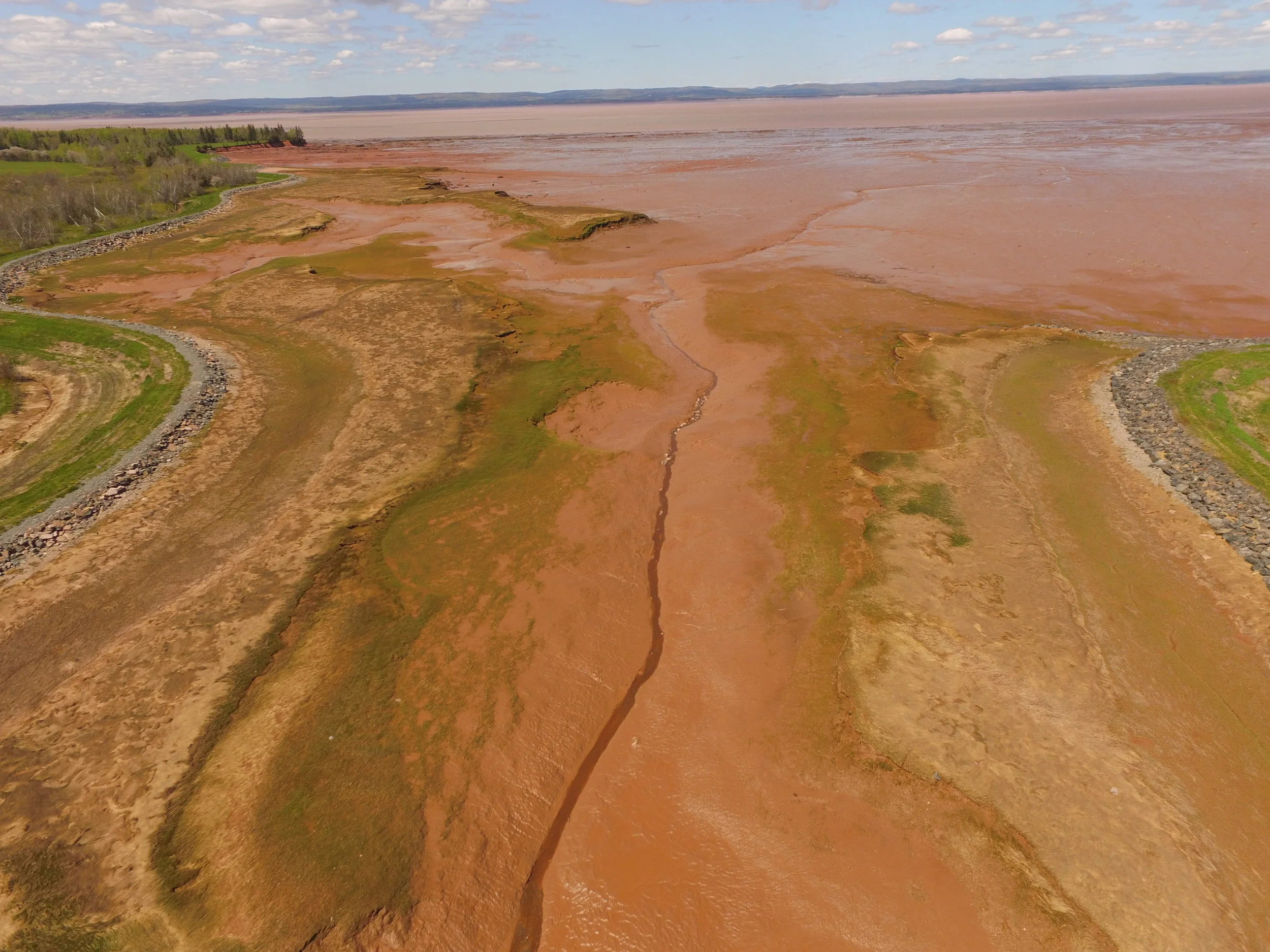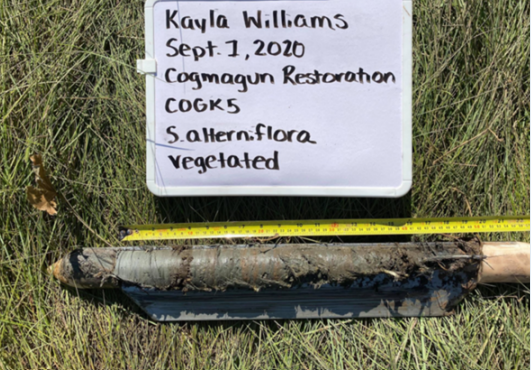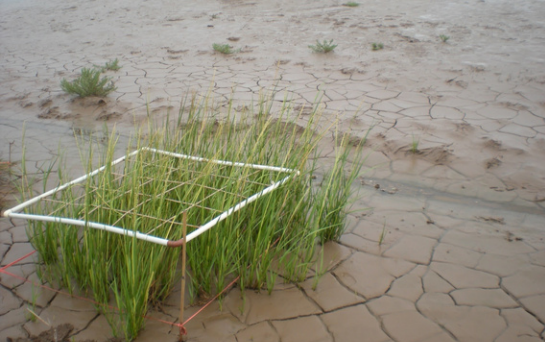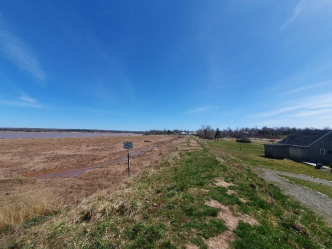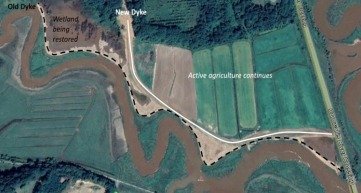Informative tools for your work.
Transcoastal Adaptation Resources
Below please find tools that we’ve created for you to download free of charge. If you are looking for something specific that isn’t listed, feel free to contact us. For information on a specific project, please visit the project page.
Stages of Managed Realignment GIF (Click here for source info)
Process of Managed Realignment Document (Click here for source info)
Nature-based solutions (NbS) for climate change adaptation (NbCA) are relatively new options in the maritimes, however the demand and awareness are growing. While there are currently few practitioners in Nova Scotia with experience in implementing NbCA solutions, with each new project undertaken, the capacity in the region grows. We are creating a growing directory of academic institutions, environmental organizations, designers, contractors, and resources who are experienced in some capacity in implementing NbS. Practitioners will be added to the directory as they become available.
In the meantime, for more organization’s working on climate change adaptation in Atlantic Canada, visit the CLIMAtlantic Networking Map.
NSERC ResNet
Below are shareable policy briefs created to share an overview and results from completed ResNet projects.
Useful Tools and Resources
Below please find a list of useful tools and resources for you to access:
-
The AMIA tool enables cities to methodically identify potential interactions between climate adaptation and mitigation measures. The tool highlights opportunities and conflicts and provides users with case studies to guide their decision-making. The library of nearly 60 case studies not only provides illustrated examples of those interactions, but also brings insight into the actual implementation of actions in different environments. Designed as a living tool, it will be updated regularly with new case studies both from C40 cities and external sources.
-
The ‘Working with the Tides’ StoryMap was produced by the Nova Scotia Department of Agriculture in September 2022. This resource gives a background and overview of the Nova Scotia Dykeland systems, and the Dykeland System Upgrade Project. This $50 million project, funded equally by both the provincial and federal governments through the Disaster Mitigation and Adaptation Fund, will aim to improve more than 25% of Nova Scotia’s Dykeland in the Bay of Fundy.
Managed Realignment Tools
There are currently a limited amount of guidance resources and tools available for those interested in implementing managed realignment in their region.
-
This initiative consists of a team of specialists who centrally manage coastal flood and erosion risks across 162km of Hampshire’s coastline in the UK. The vision of this partnership is to reduce the risk of coastal flooding and erosion by supporting technically, environmentally and economically sustainable coastal defense and protection measures. A variety of management strategies are utilized under the partnership including delivery of Coastal Flood and Erosion Risk Management Strategies, designing and implement engineering schemes to improve flood and erosion protection, provide maintenance of sea defenses, contributing to monitoring and research and engaging with local stakeholders.
-
The Climate-ADAPT platform is a partnership between the European Commission and the European Environment Agency (EEA) with the support of the European Topic Centre on Climate Change Impacts, Vulnerability and Adaptation. This is essentially a ‘one-stop shop’ for adaptation information in Europe. It aims to support European decision-makers in adapting to climate change by increasing access and sharing of information on current and future vulnerability, adaptation strategies, case studies and other resources.
Collaborative Platforms
-
The CCACoP is an interactive online community dedicated to advancing knowledge and action in the area of climate change adaptation. The CCACoP serves as a location where researchers, experts, policy-makers and practitioners from across Canada can come together to ask questions, generate ideas, share knowledge, and communicate with others working in the field of climate change adaptation. One of the main goals of the CCACoP is to support all Canadian provinces and territories in their efforts to incorporate climate change adaptation into planning and policies.
-
The ACASA was a partnership initiative between the provincial governments of Newfoundland and Labrador, Nova Scotia, Prince Edward Island and New Brunswick, as well as regional non-profits, tribal governments, industry and other stakeholders. Their website provides access to projects, publications, case studies, and other regional resources in order to assist Atlantic Canadians with preparing for and adapting to climate change.
-
CoastAdapt is a platform that provides information and decision making resources for issues regarding climate change and sea-level rise along Australia’s coastline. It is a national resource to assist Australians in understanding climate change and the options available to manage impacts. Resources include a decision making framework titled Coastal Climate Adaptation Decision Support, information manuals, infographics, case studies, impact sheets and risk assessment templates.
-
The NHCAW is a collaboration of 24 organizations focused on ensuring coastal communities in New Hampshire are resourceful, ready and resilient to impacts of long term climate change. They provide resources, facilitation and guidance to enhance local resilience. Key focus areas for this group involve community outreach, municipal planning, coastal risk & hazards, living shorelines and business continuity.
-
The COAST software tool is a free download built on the Global Mapper softwhttps://www.bluemarblegeo.com/global-mapper/are developer toolkit and promoted in partnership with Catalysis Adaptation Partners (CAP). This tool is a resource that helps users with questions regarding costs and benefits associated with coastal defense strategies. Associates at CAP help organizations/communities connect technical results with the realities of local adaptation. The output from using this tool is in the form of files compatible Google Earth and tables showing cumulative expected damages under the adaptation scenarios that stakeholders have developed. These allow for a cost-benefit analysis of the candidate adaptation actions.
Research Based Platforms
-
The NCCARF supports decision makers in Australia in preparing for and managing risks associated with climate change and sea-level rise. Recent resources focus on coastal adaptation needs for impacts in relation to more frequent and intense heatwaves, increased risk of flooding and increased coastal erosion. This is a facility based at Griffith University but engages stakeholders across the country to build resilience to climate change.
-
The Stanford Center for Ocean Solutions has collaborated with the Natural Capital Project to assist coastal decision makers with incorporating an ecosystem services based approach into their proactive climate adaptation planning. The team has working with multiple governments across California to co- develop policy-relevant information to aid local climate adaptation planning. They have created a set of coastal adaptation policy briefs, a beta online viewer, and a compilation of relevant data sets, all tailored to the feedback and needs of local communities.
-
This program works with the National Estuary Programs and the coastal management community to assess climate change vulnerabilities, develop and implement adaptation strategies and engage and educate stakeholders. Resources include a Coastal Adaptation Toolkit, Risk-based Adaptation tools, resources on Sea Level Rise and Coasts, King Tides & Climate Change information and a variety of other materials.
-
The Government of Tuvalu is implementing measures to reduce impacts of climate-induced sea level rise and intensifying storm events on key infrastructure. The focus of the project is to build coastal resilience along 2780m of high-value vulnerable coastline. A range of measured are being used in this seven-year project including eco-system initiatives, beach nourishment, concrete and rock revetments, and sea walls, and it is slated for completion in 2024.
-
This resource summarizes the current state of the National Park Service (NPS) climate adaptations and some of the key approaches being utilized or considered for climate change adaptation in coastal areas. The focus for this tool is to guide adaptation planning in coastal park by highlighting processes, tools and examples that are applicable to decision makers. This handbook complements an earlier collection of 24 case studies from NPS managers working to combat climate change impacts on coastal park resources (see following).
-
This report highlights 24 coastal adaptation efforts occurring in 15 states throughout the USA. The strategies detailed here include historic structure preservation, archeological surveys, baseline data collection and documentation, habitat restoration, engineering solutions, redesign and relocation of infrastructure, and development of broad management plans that consider climate change.
-
The Adaptation Clearinghouse is a resource for stakeholders who are helping communities adapt to climate change. The focal areas for content include water, coastal, transportation, infrastructure and public health sectors, and adaptation planning, policies, laws, and governance. This initiative was developed by the Georgetown Climate Center, an organization seeking to advance climate, energy, and transportation policies in the USA.
-
This is a learning portal that has been funded by the Innovative Management for Europe’s Changing Coastal Resource organization and is designed to share insights with practitioners regarding coastal adaptation. They have executed nine case studies across northwest Europe, testing tools and methods to build adaptation strategies and capacity. These can now be used to guide other communities and stakeholders through tried and tested methodologies to help adaptation strategies and planning in coastal areas.
-
The intention of this project is to develop a methodology and templates to assisted coastal managers across NW Europe in developing required adaptive strategies. This is a collaboration between coastal management practitioners and scientists from Ireland, the UK, France, Belgium and the Netherlands. This supports government authorities and research groups working together to identify the key processes that lead to the socio-economic consequences of climate change in their local areas.
-
The Nicholas Institute for Environmental Policy Solutions (Duke University) developed a series of resources evaluating why ecosystem services conceptual models (EXCMs) are useful for decision making, application examples of ESCMs, and providing guidance on building ESCMs. The aim of this collection is to provide practical guidance for those hoping to apply ESCMs as a tool for incorporating ecosystem services considerations into their decisions.
-
The US Army Corps of Engineers North Atlantic Division has created a dynamic resource with animations of multiple examples of coastal risk management strategies. It separates the strategies into non-structural, structural and natural & nature-based features (nnfb) and explains and shows how the strategies will mitigate coastal storm damage risk.
-
The European Commission has funded the RISC-KIT to provide tools to better assess and mitigate risks from coastal storms and help prevent disaster from occurring. The tools outlined are somewhat site specific but there is the option to recreate similar resources that can be applicable elsewhere. The Storm Impact Database shows consequences from historical storms, raising historical awareness can help gain support for future measures. The Coastal Risk Assessment Framework helps to assess areas of risk and evaluate landuse, transport and economic areas for prioritizing disaster risk reduction efforts. The Web-Based Management Guide shows which strategies have or have not worked in other regions. Case studies have been evaluated according to technical, political, social and ecological criteria as well as cost effectiveness and ecosystem services. The Hot-Spot Tool is used to evaluate and visualize the effectiveness of different strategies. Finally the Multi-Criteria Analysis Guide is used to determine how viable different solutions are within a local community.
Another useful link from this site: https://www.youtube.com/watch?v=VcwKA2nCIk4

